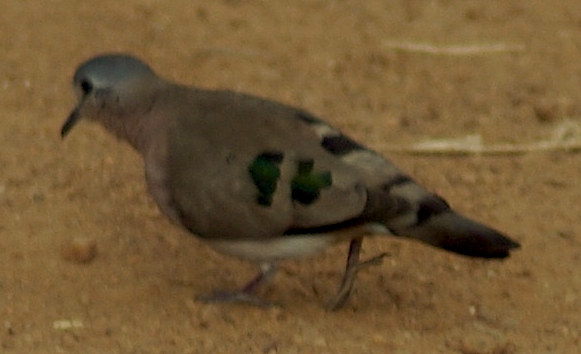|
| Query: northern grey shrike | Result: 41st of 44 | |
Emerald-spotted Wood Dove (Turtur chalcospilos) - Wiki
| Subject: | Emerald-spotted Wood Dove (Turtur chalcospilos) - Wiki
| |

| Resolution: 581x354
File Size: 209019 Bytes
Date: 2007:06:27 07:48:29
Camera: PENTAX K10D (PENTAX Corporation )
Exposure: 1/350 sec
Focal Length: 300/1
Upload Date: 2007:10:31 10:38:21
|
ERROR : Server Busy(-1105)
ERROR : Server Busy(-1105)
Emerald-spotted Wood Dove (Turtur chalcospilos) - Wiki
Emerald-spotted Wood Dove
From Wikipedia, the free encyclopedia
[Photo] Adult Emerald-spotted Wood Dove (Turtur chalcospilos) showing emerald spots. Maasai Mara National Reserve, Kenya. June 27, 2007. Photo by Jerry Friedman (http://en.wikipedia.org/wiki/User:JerryFriedman) Copyright (C) 2007 Jerry Friedman
Permission is granted to copy, distribute and/or modify this document under the terms of the GNU Free Documentation License, Version 1.2 or any later version published by the Free Software Foundation; with no Invariant Sections, no Front-Cover Texts, and no Back-Cover Texts. A copy of the license is included in the section entitled "GNU Free Documentation License". |
The Emerald-spotted Wood Dove, Turtur chalcospilos, is a pigeon which is a widespread and often abundant resident breeding bird in eastern Africa from Ethiopia to South Africa. It also occurs in a belt from northern Botswana west to northern Namibia, and in a narrow coastal strip through Angola to Gabon.
This is a species of open drier deciduous woodland and second growth. It is absent from evergreen rainforests and semidesert areas.
Description
Emerald-spotted Wood Dove is a small plump pigeon, typically 20 cm in length. Its back, hindneck, wings and tail are pale grey brown, and the folded wings have green metallic patches. There are blackish bands on the lower back and tail. The forehead, crown and nape are bluish grey, fading to pinkish grey on the throat. The underparts are mauve-pink, becoming whiter on the belly.
The bill of this dove is blackish with a red base. When flying, Black-billed Wood Dove shows bright chestnut underwings. The sexes are similar, but the female may be slightly duller than the male. The immature has duller green spots and buff fringes to the feathers.
The call is in three parts; two soft long coos, followed by a series of slow descending coos lasting 10 seconds, and concluding with 4 seconds of rapid coos,which decrease in volume.
This species shows some geographical variation in plumage, but differences are clinal, and Emerald-spotted Wood Dove is now considered to be monotypic.
Behaviour
The Emerald-spotted Wood Dove builds a flimsy stick nest in a tree or shrub, and lays two cream-coloured eggs. Both sexes incubate for 13-17 days to hatching, and feed the squabs for 13-17 days to fledging. Many young birds are taken by mongooses and shrikes.
The Emerald-spotted Wood Dove is not gregarious, but flocks may form at waterholes. This species usually forages on the ground for grass and other small seeds.
http://en.wikipedia.org/wiki/Emerald-spotted_Wood_Dove
| The text in this page is based on the copyrighted Wikipedia article shown in above URL. It is used under the GNU Free Documentation License. You may redistribute it, verbatim or modified, providing that you comply with the terms of the GFDL. |
|
Comments |
|---|
| | Guest |
|
Scientific Name: Turtur chalcospilos (Wagler, 1827)
Common Names:
English – Emerald-spotted Wood-dove, Emerald-spotted Dove, Green-spotted Wood-dove
French – Tourtelette émeraudine
French: Tourtelette émeraudine German: Bronzeflecktaube Spanish: Palomita aliverde
Taxonomy: Columba Chalcospilos Wagler, 1827, eastern Cape Province, South Africa. |

|

|

|
northern grey shrike
41/44 |

|
 |
^o^
Animal Pictures Archive for smart phones
^o^
|
|
|

